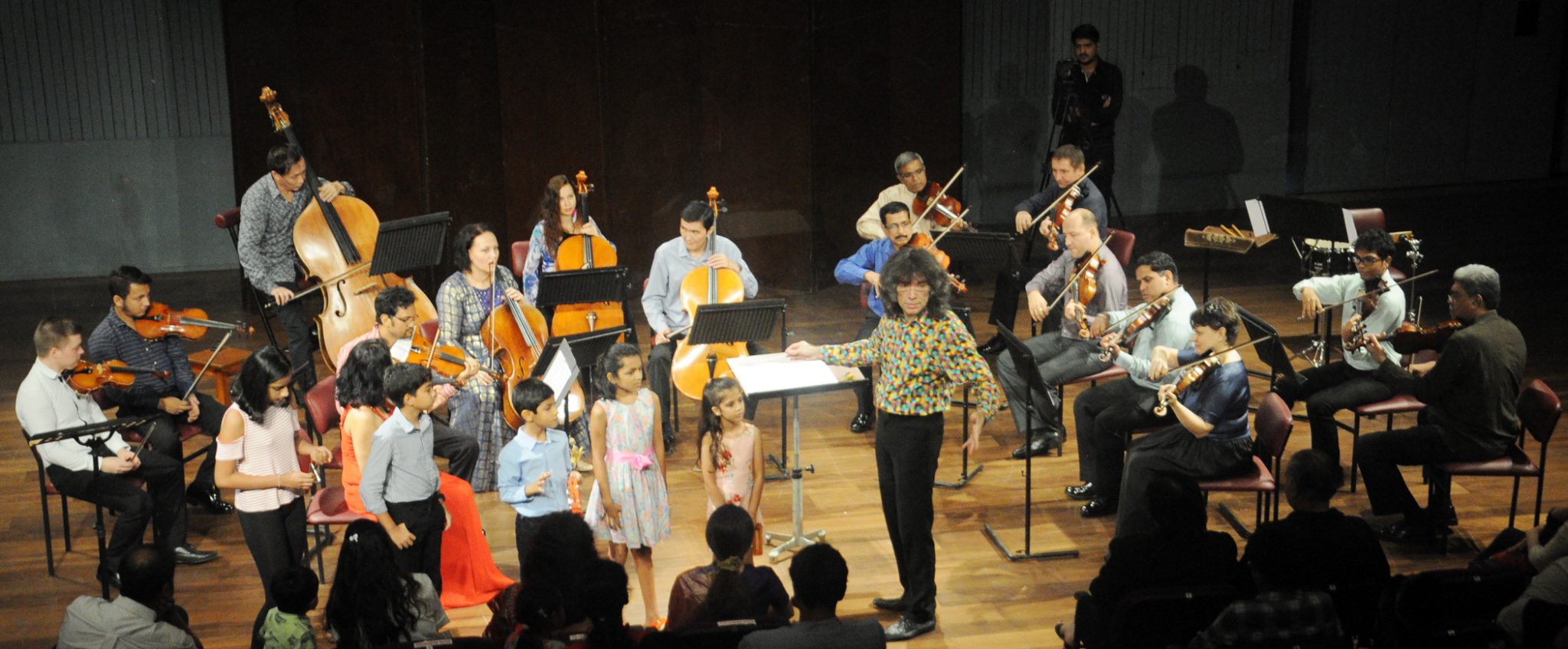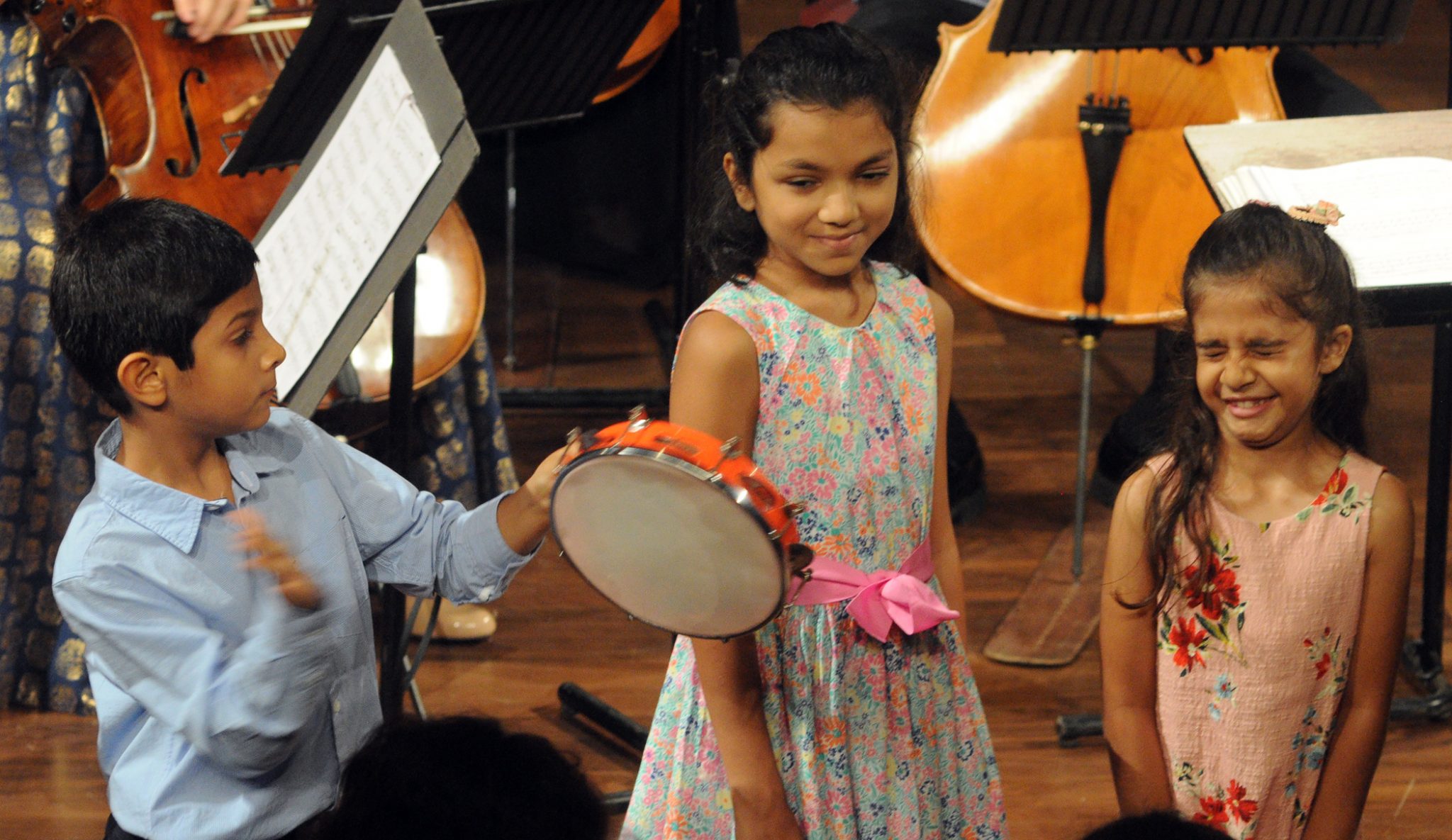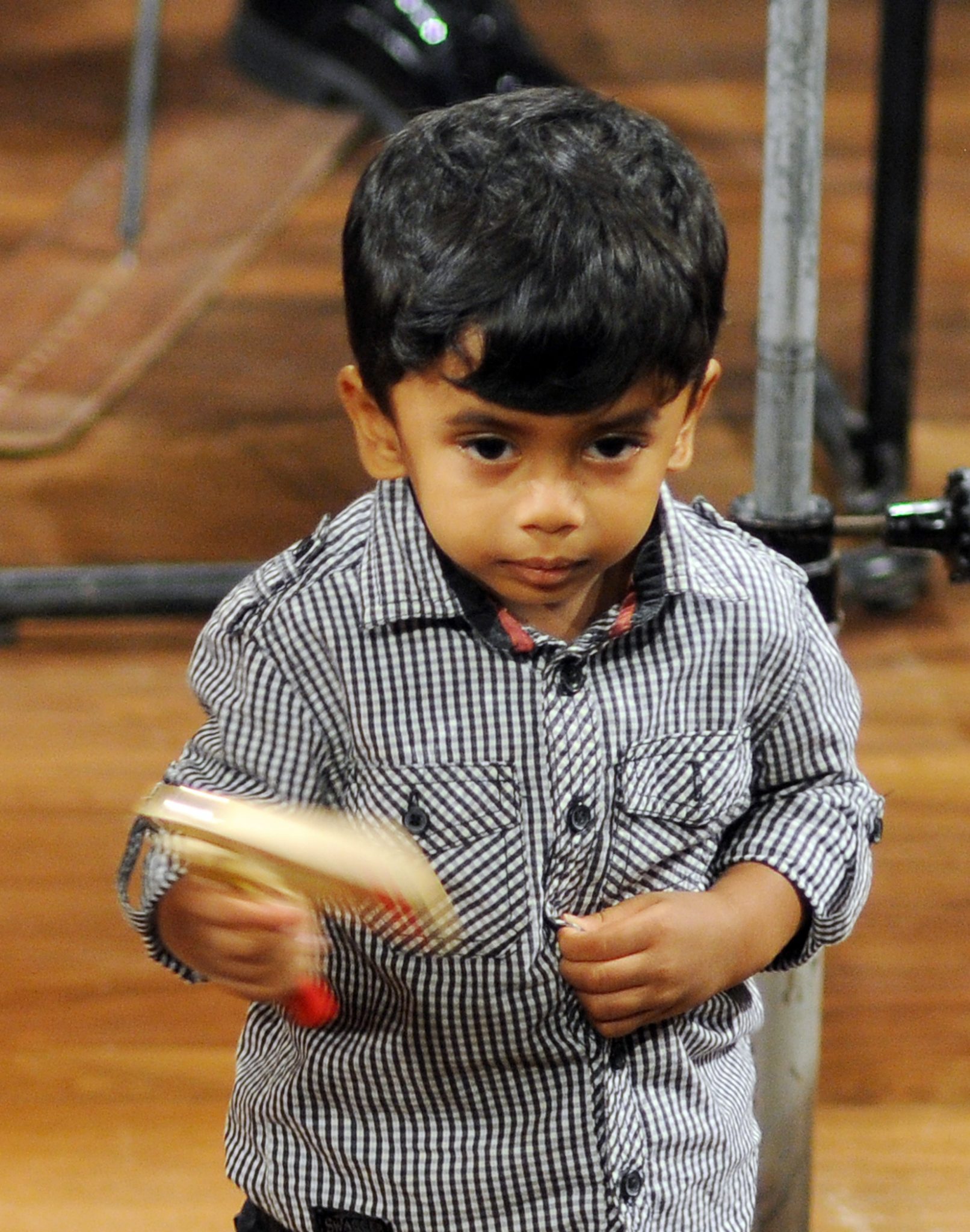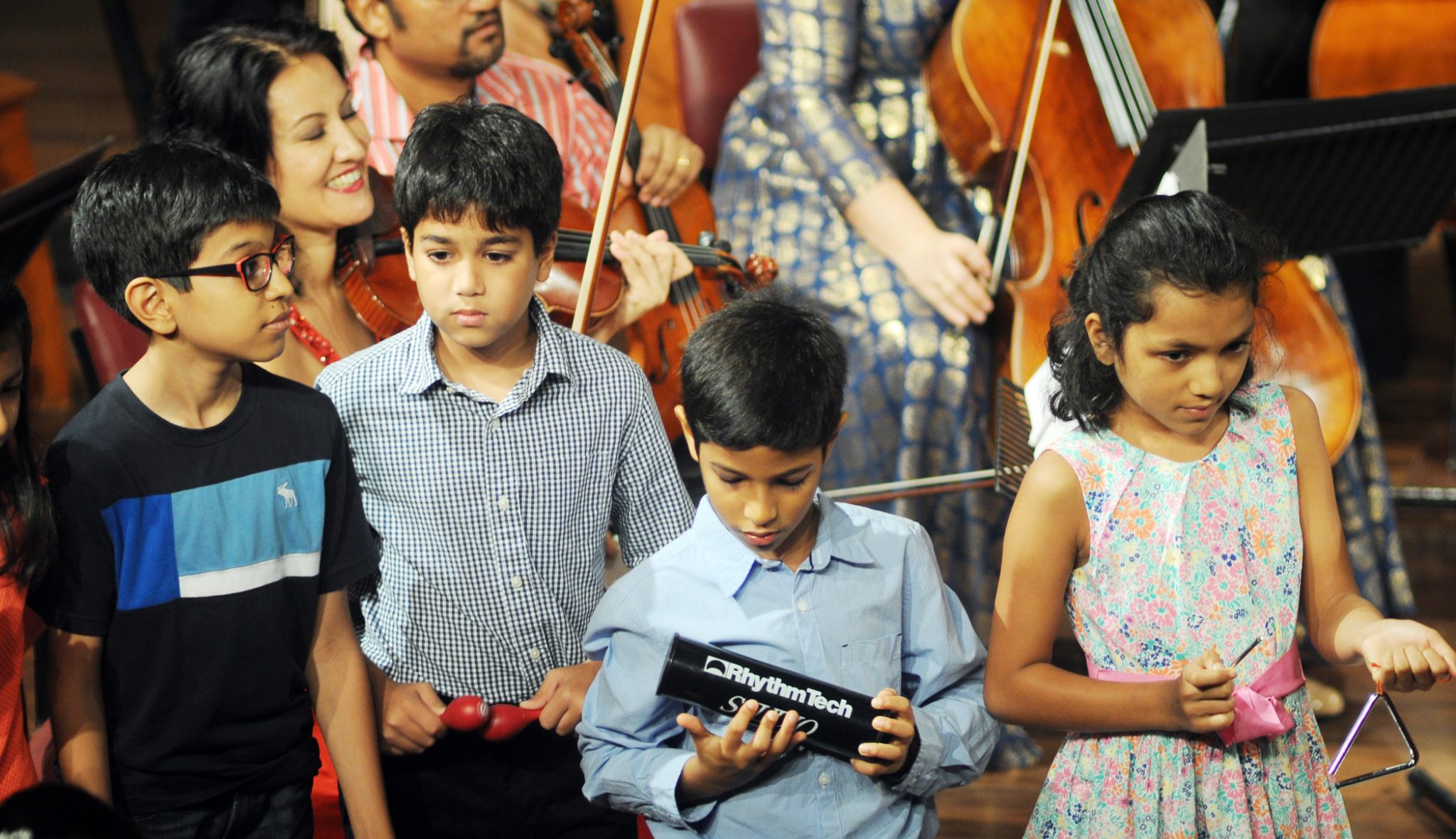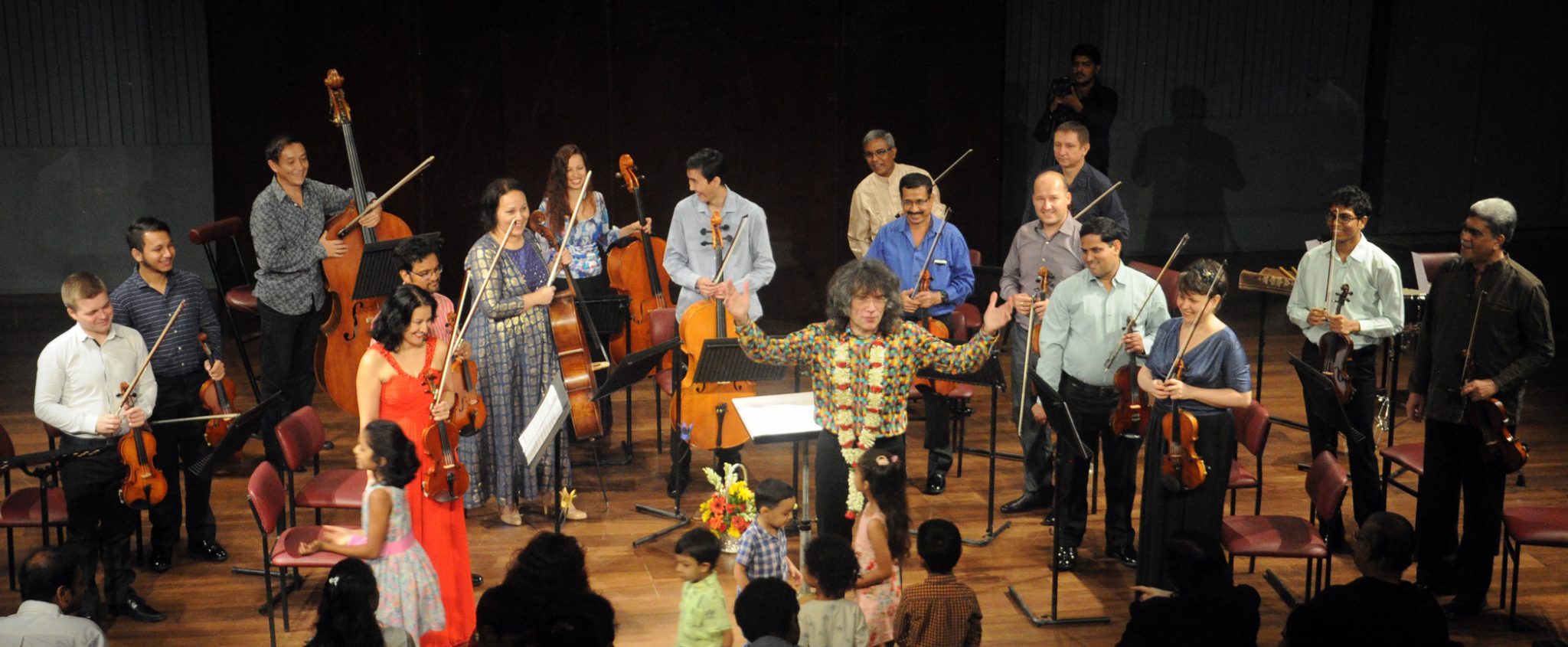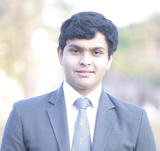Spreading Appreciation for Western Classical Music – One Child at a time
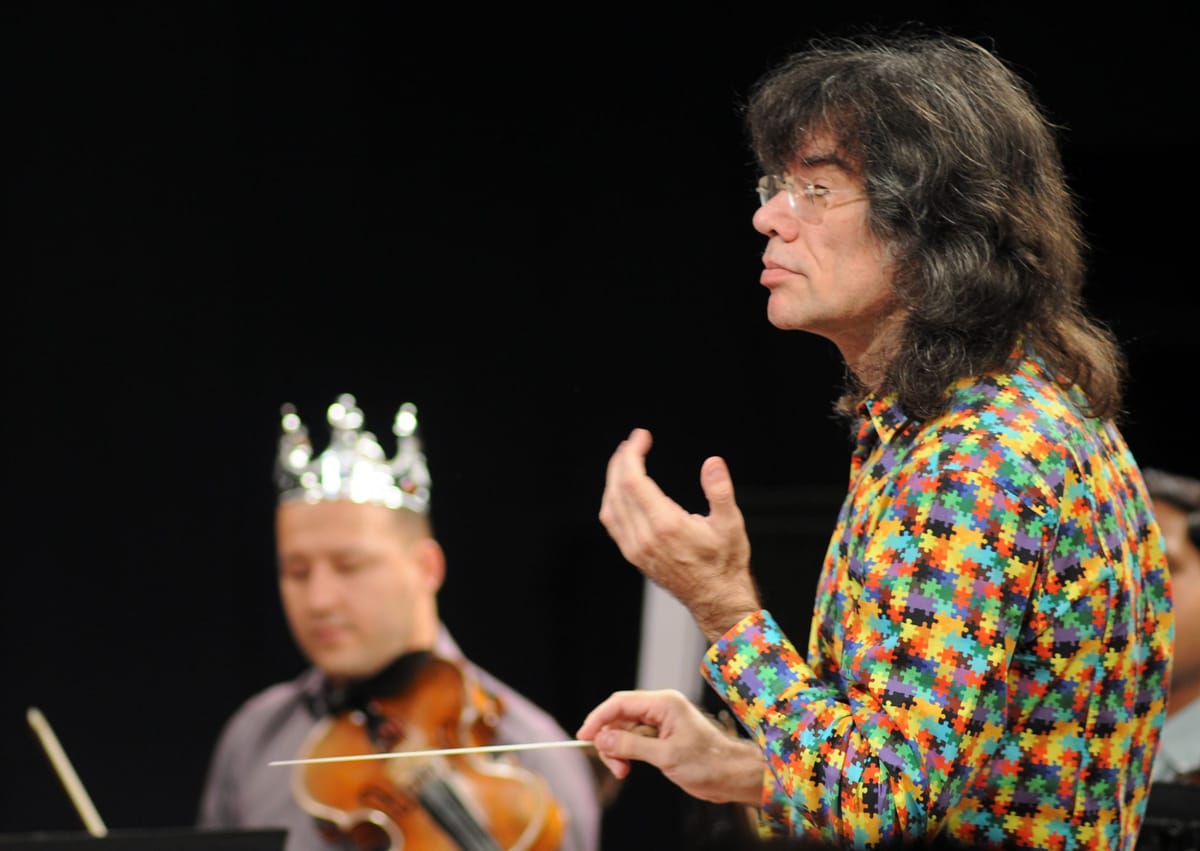
In a country where the strains of filmy Bollywood music constantly dominates a child’s exposure to music, the ‘Classics, it’s Classy’ concert series, poses a significant alternative to such an exposure. Performed by the Symphony Orchestra of India’s Chamber Ensemble and conducted by Evgeny Bushkov at the National Centre for Performing Arts, the concert is orchestrated primarily for children under the age of 10. Therefore, on a Sunday morning I found myself surrounded by parents with their little children, in the hall outside the Experimental Theatre at NCPA.
As we shuffled into the hall and quietened down, we were constantly reminded of the active role we were to play, with a colourful brochure particularly clarifying this. The first piece was Efrem Podgatis’s ‘Strange String Fairy Tale’. As the name suggests the piece is a fairy tale, told over the orchestra. However, to further fictionalise the orchestra, the characters of the fairy tale were all members of the string family, all of whom were seated before the audience. The piece established different tonal colours through its course with the ‘King Double Bass’ starting the piece on the lower octaves, accompanied by Violin pizzicato. This combination of instrumentation was constantly repeated in order to introduce the different themes of the piece, which correlated with the narration of different characters. While the ‘Princess Violin’ was being introduced, the first chair Violinist would do a solo over a pizzicato base line, provided by the lower strings. The second part of piece featured calls and responses between different sets of instruments. The piece is rather enjoyable with ‘duels’ between the viola and double bass, a passage that constantly used variation in not just pitch, but also, in dynamics. Furthermore, the orchestra uses Vibrato and Sul Ponticello to shift with the moods of the narrative; something that proves to engage the younger members of the audience. The ending of the piece brings in a completely different marriage dance, set in duple time, that acts as a celebration of the fairy tale as a characteristic ‘happily ever after finish’.
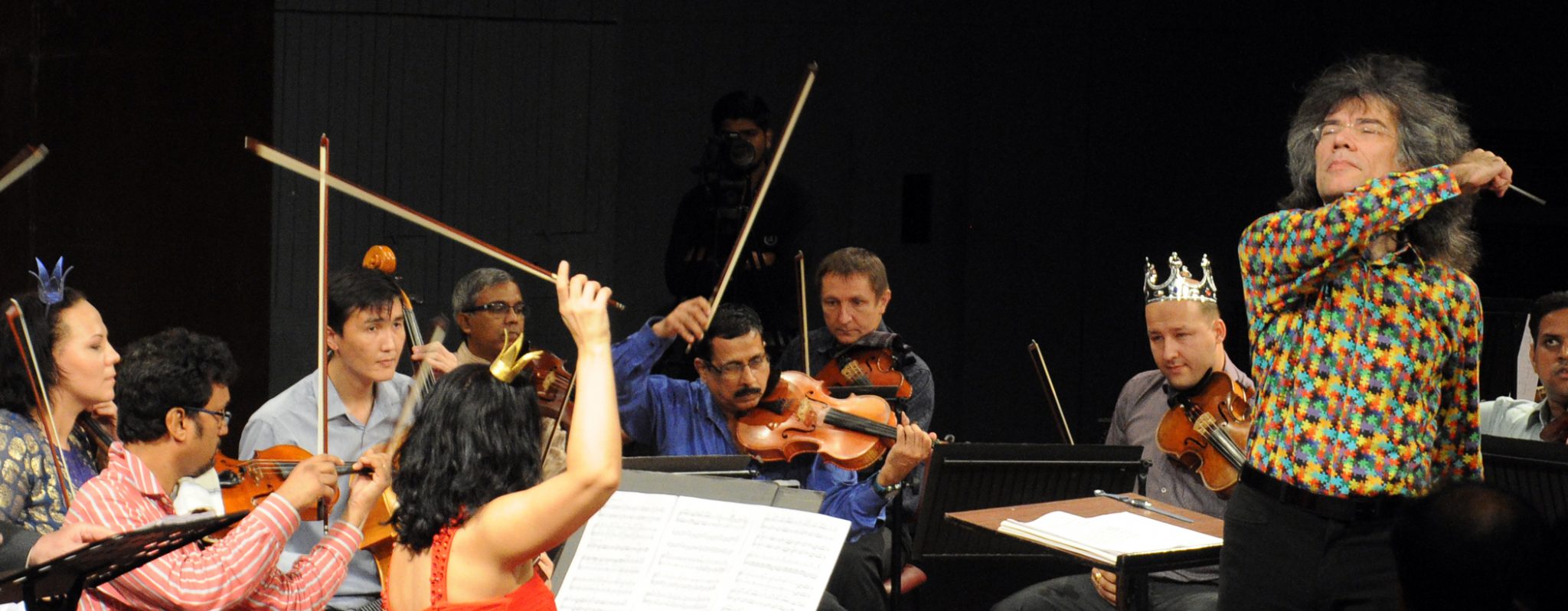
The second part of the performance featured 5 short pieces titled ‘Children’s Corner’ by Mikhail Bronner, which brought in the interactive component of the performance. Bushkov constantly asked the members of the audience to perform with him; so in the first Waltz titled ‘Frogs and Sparrows’, the audience was divided and told to imitate frogs and sparrows in accordance with the conductor’s Baton. This unusual practice proved immensely popular with the audience; with several enthusiastic children (and parents) carrying on their imitation of the animals throughout the brief piece. Moreover, Bushkov handed over some Tambourines, Triangles and Ratchets to the younger members of the audience as they joined the orchestra in performance. The other pieces were similar; one entailed the audience waving their program brochures on queue, to imitate the sound of rustling leaves while another asked the audience to imitate the bleating of sheep. A particularly popular piece was titled ‘Wail of the Little Sad Donkey’, based on a character from the children’s classic ‘Winnie the Pooh’ where the audience had to sigh on queue. It is worth noting that this particular piece featured an immensely complex and difficult Double Bass solo played on its higher octaves. The performance was then rounded of with an encore featuring the addition of the snare drum, which, along with the coordinated clapping of the audience, brought in syncopation.
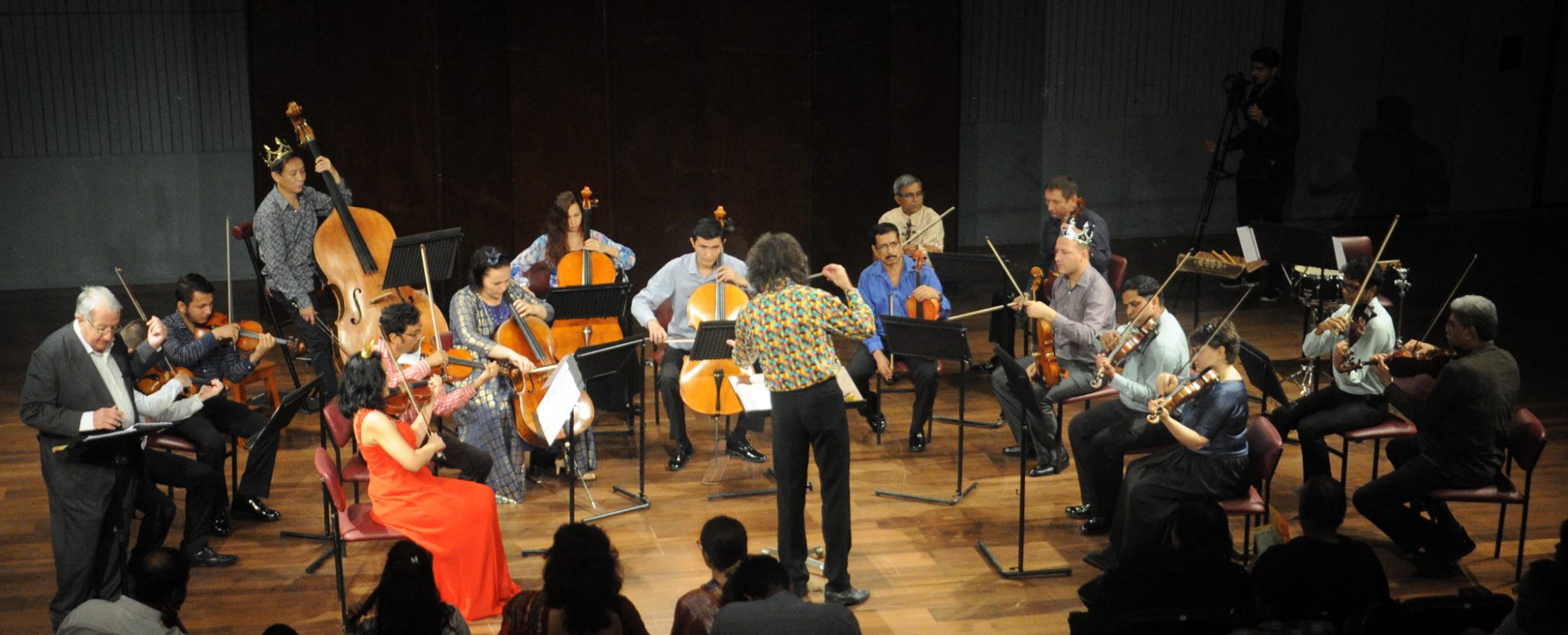
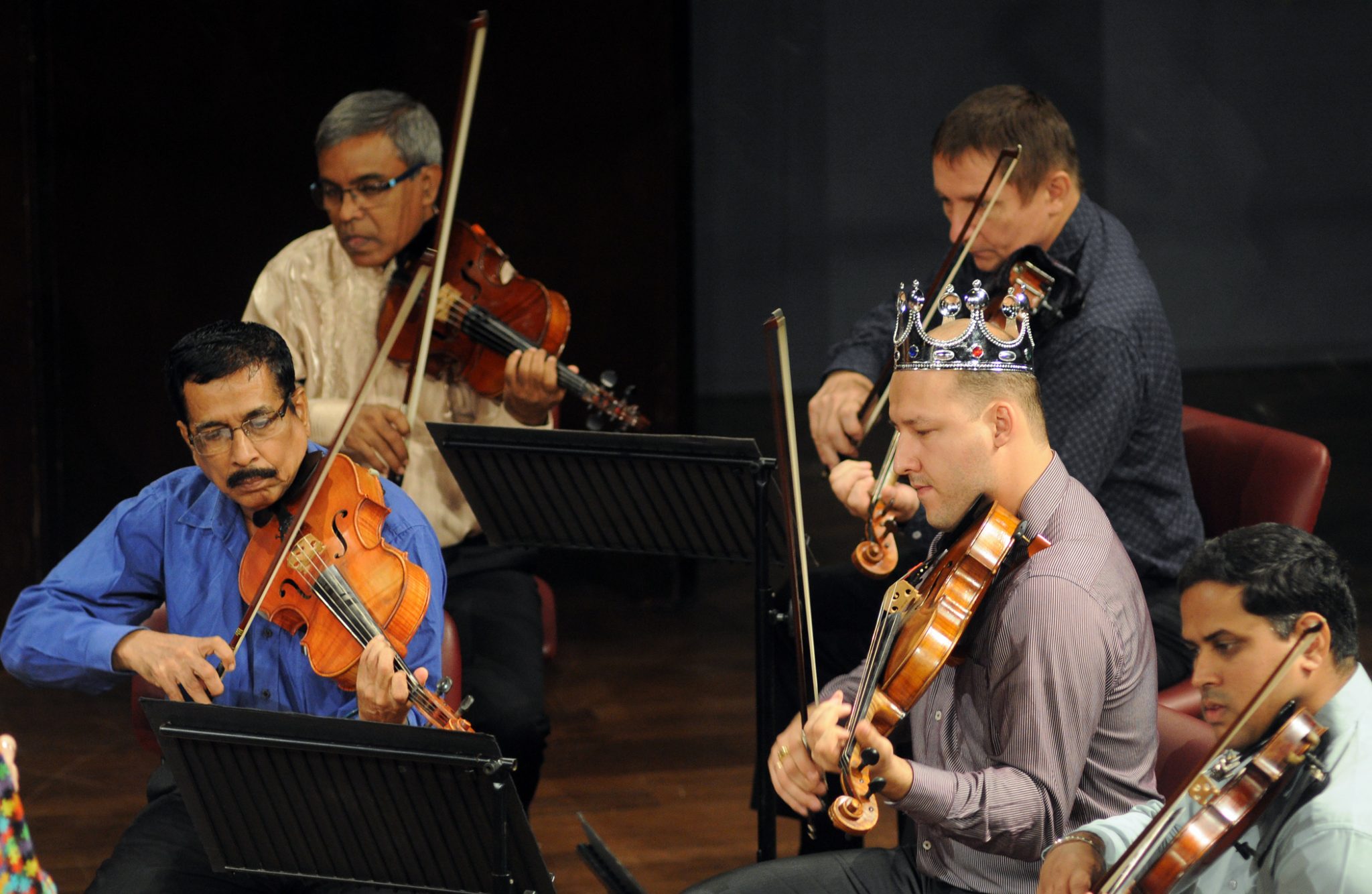
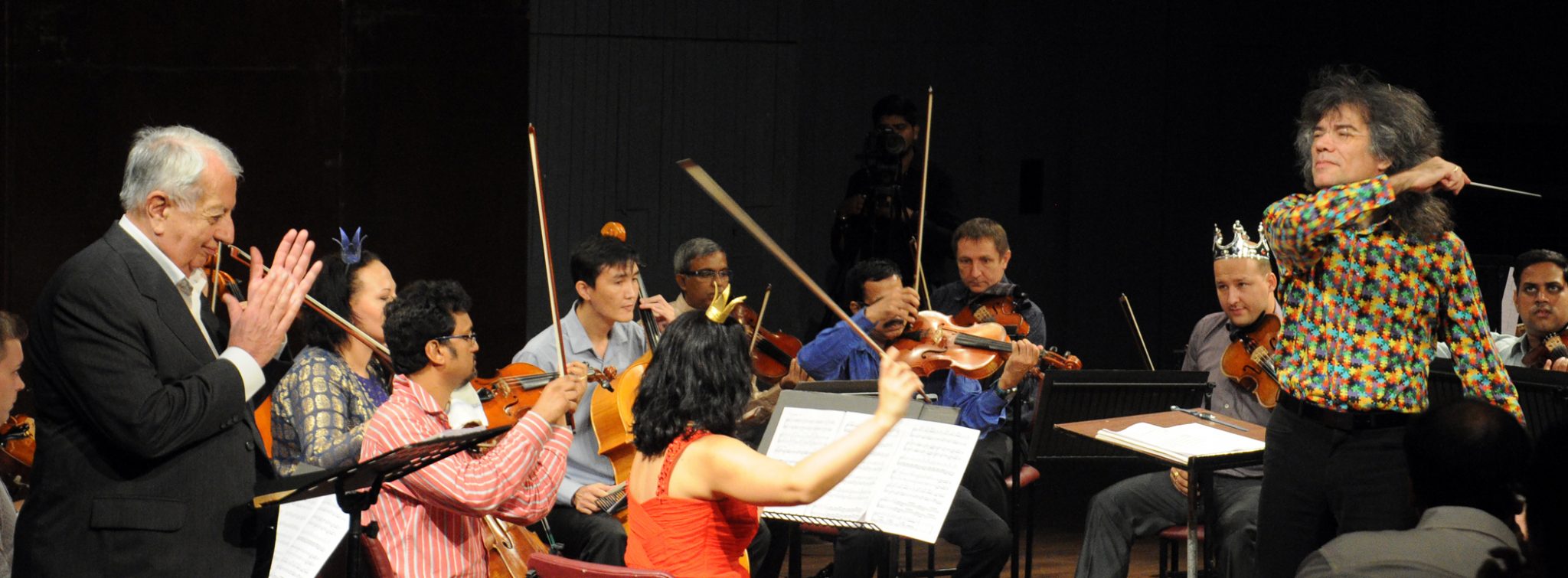
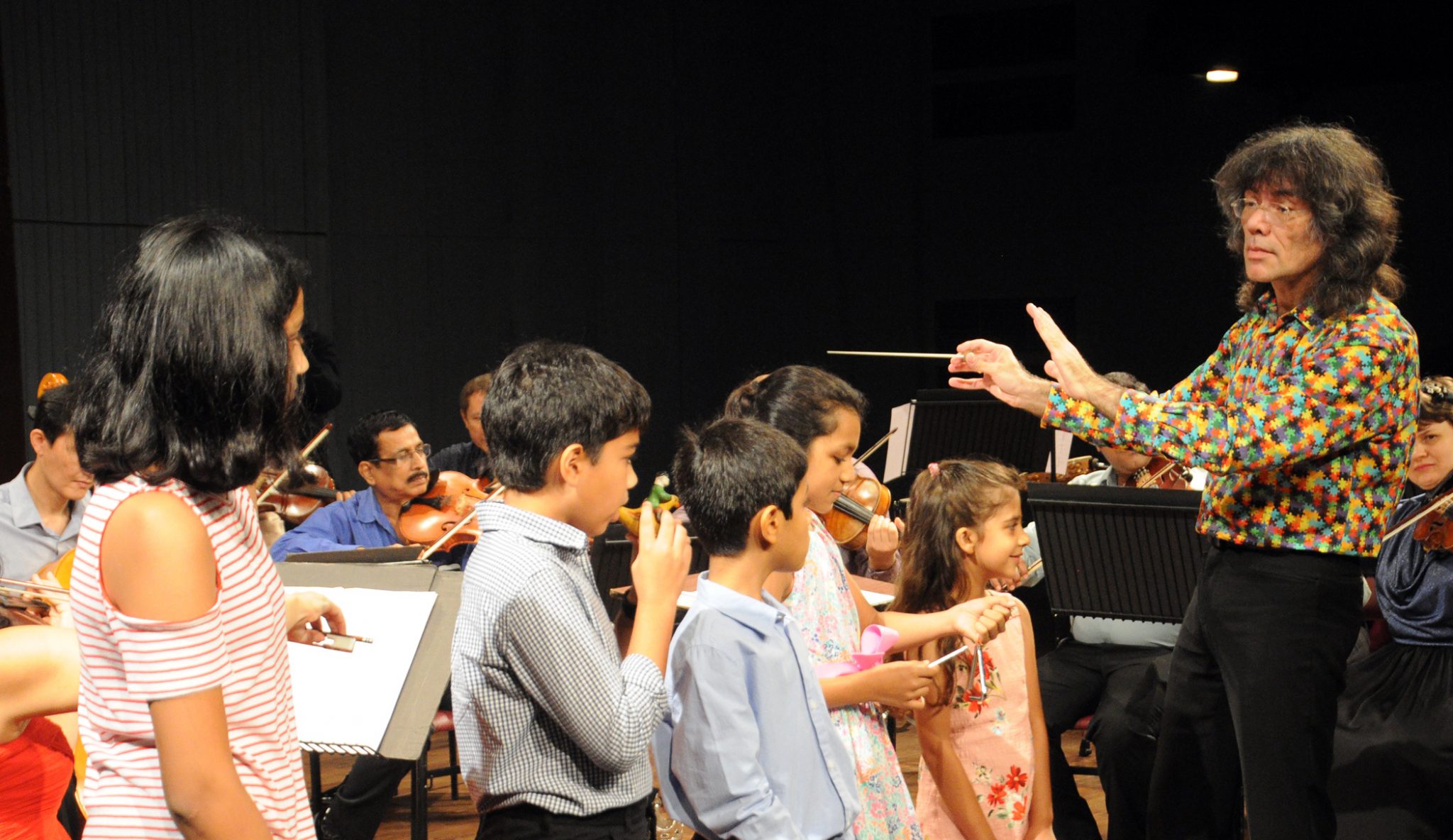
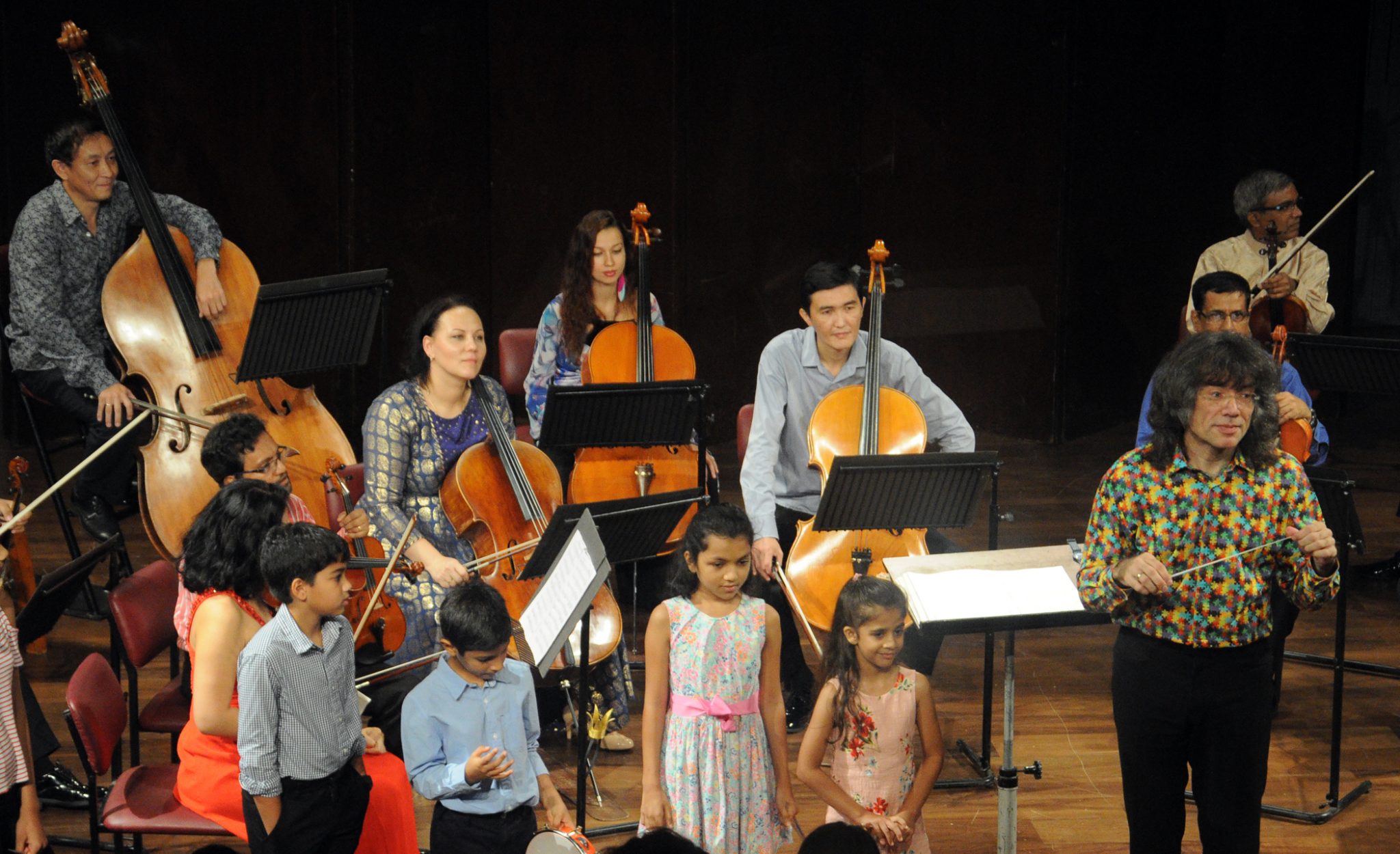
This concert was the first of its kind in this country and as mentioned earlier, it is a much-needed alternative to exposing young children to music. Western classical music in India is extremely limited to cosmopolitan cities like Mumbai, however, by kindling an interest of such music in younger generations comes the gradual growth of such music across the country. I highly recommend this concert series to parents, as the concert is engaging and all in all fun; for people of all ages.
